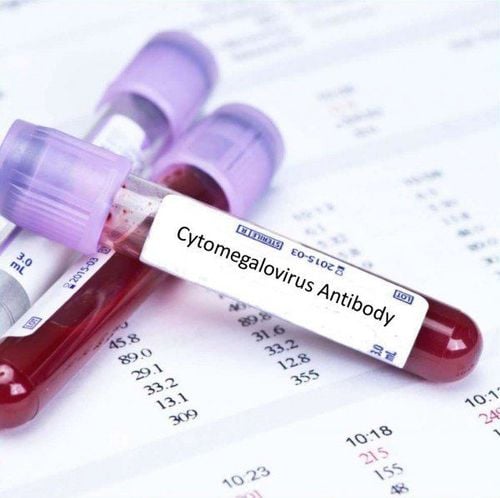This is an automatically translated article.
The article was written by MSc Vu Duy Dung - Doctor of Neurology, Department of General Internal Medicine - Vinmec Times City International Hospital.
As more and more patients receive immunosuppressive therapy, human herpes virus infections are becoming more and more common. Previously, human herpes virus infection was described as temporal lobe encephalitis caused by herpes simplex virus type 1 or type 2. More recently, however, other pathogens, such as varicella-zoster virus, Epstein-Barr virus, cytomegalovirus and human herpesvirus 6 have been identified to cause serious neurological infections.
An overview of herpesvirus infection
As described in the literature, the clinical manifestations of herpesvirus infection have taken on new forms, become more diverse, and involve nearly all sites along the nerve axis.
There are now advanced diagnostic methods for each specific pathogen in the herpesvirus family. Because of the growing data on viruses that are resistant to conventional therapies, new antiviral drugs must be considered.
All members of the Herpesviridae family have a similar molecular structure consisting of a large double-stranded DNA core surrounded by a protein coat and lipid bilayer.
Attached to the inside of the membrane are glycoproteins with different properties that allow each virus to evade a pattern of the body's immune response. Three subfamily of herpesviruses, classified as alpha, beta, and gamma, cause disease in humans.
This article focuses primarily on the neuropathology of the alpha virus family, which includes herpes simplex virus type 1 (HSV-1), herpes simplex virus type 2 (HSV-2), and varicella-zoster virus (VZV). ) .
This article also briefly reviews immunodeficiency and organ transplant-associated viruses, including cytomegalovirus (CMV) (beta family), human herpesvirus 6 (HHV6) (beta family), and Epstein-Barr virus ( EBV) (gamma family).

All herpesviruses can cause neuropathy by primary infection or by reactivation of the underlying disease, predicting risk mainly on the basis of age and immune status of the host.
Viruses enter the nervous system by two main mechanisms: hematogenous transmission or neural transmission. The route of viral infection is highly dependent on the mechanism and site of infection.
Whether viral pathogenesis is ultimately successful depends on environmental factors, host immune susceptibility, and genetic variation. For example, neonatal herpes infection can be caused by blood-borne virus transmission from the mother, with placental infection in the newborn resulting in disseminated disease of the skin, brain, eyes, liver, and adrenal glands.
In contrast, direct infection from genital contact during delivery leads to direct transmission of the nervous system from the infant's mucosa to the central nervous system (CNS). is encephalitis.
The heterogeneous nature of the clinical manifestations of herpesvirus infection makes clinical diagnosis difficult. For example, VZV can damage nearly all sites along the neural axis, including the retina, cranial nerves, brain parenchyma, brain stem, cerebellum, spinal cord, peripheral nerves, and skin. Viral infections in the herpesvirus family can have severe neurological consequences if not treated quickly and appropriately. Recognizing the clinical symptoms and doing the appropriate advanced tests are necessary to determine the exact cause of the infection. Knowledge of the neurological complications secondary to the disease is also important to prevent further mortality and sequelae.

We will describe CNS and peripheral nervous system infections caused by herpes simplex virus type 1 and type 2, varicella-zoster virus, Epstein-Barr virus, cytomegalovirus, and human herpesvirus 6, respectively. Pathophysiology The epidemiology, clinical presentation, diagnostic tests, imaging features, and treatment of each viral infection will be detailed.
Please dial HOTLINE for more information or register for an appointment HERE. Download MyVinmec app to make appointments faster and to manage your bookings easily.
Articles source references:
Baldwin KJ, Cummings CL. Herpesvirus Infections of the Nervous System. Continuum (Minneap Minn) 2018;24(5, Neuroinfectious Disease):1349-1369.














